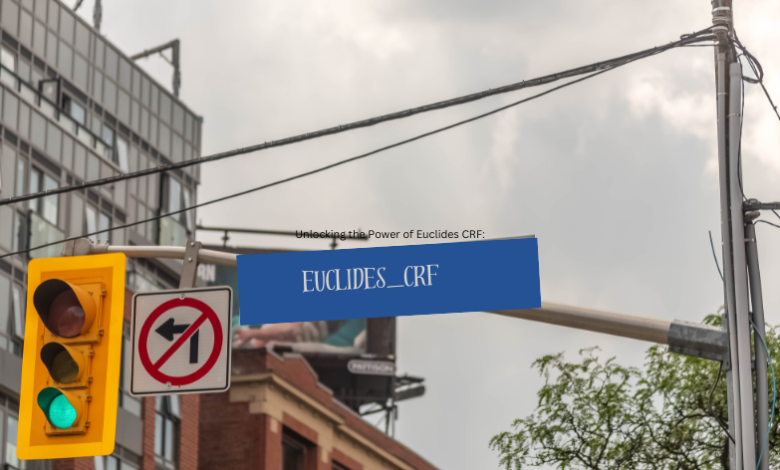Unlocking the Power of Euclides CRF:

In the area of facts evaluation and machine getting to know, Euclides CRF sticks out as a powerful device for information complicated relationships inside established data. In this manual, we’ll delve into what Euclides CRF is, the way it works, its programs, and pointers for powerful implementation.
What is Euclides CRF?
Euclides CRF, short for Euclidean Conditional Random Fields, is a probabilistic graphical model used for modeling dependencies among dependent records. It extends the traditional Conditional Random Fields (CRF) through incorporating Euclidean distance measures, allowing it to seize spatial relationships further to sequential dependencies.
How Euclides CRF Works
Graphical Representation: Euclides CRF represents data as a graph, where nodes represent variables and edges denote dependencies.
Incorporating Euclidean Distance: Unlike traditional CRFs, Euclides CRF considers the Euclidean distance between nodes, adding a spatial measurement to the modeling manner.
Learning Parameters: Euclides CRF learns the parameters of the model from categorized statistics, adjusting weights to maximize the probability of discovered facts.
Applications of Euclides CRF
Natural Language Processing: Euclides CRF finds packages in responsibilities like named entity recognition, component-of-speech tagging, and syntactic parsing.
Computer Vision: In image evaluation, Euclides CRF aids in tasks which include item detection, segmentation, and photo labeling.
Bioinformatics: Euclides CRF is applied in protein shape prediction, gene expression analysis, and DNA collection labeling.
Spatial Data Analysis: It’s additionally employed in geographical information analysis, which include spatial clustering, land cowl class, and environmental modeling.
Benefits of Euclides CRF
Flexibility: Euclides CRF’s graphical version permits for clean incorporation of area-precise knowledge.
Interpretability: The version’s graphical illustration helps the translation of discovered dependencies.
Accuracy: By thinking about both sequential and spatial relationships, Euclides CRF frequently outperforms conventional CRFs in diverse tasks.
Challenges and Considerations
Complexity: Euclides CRF models can end up complex, requiring cautious parameter tuning and computational assets.
Data Requirements: Adequate labeled facts is essential for schooling correct Euclides CRF models.
Interpretation: While the graphical version aids interpretation, understanding complex relationships can nonetheless be hard.
Tips for Effective Implementation
Data Preprocessing: Clean and preprocess facts to remove noise and irrelevant information.
Feature Engineering: Extract applicable capabilities that seize both sequential and spatial elements of the records.
Parameter Tuning: Experiment with exclusive parameter settings to optimize model performance.
Evaluation Metrics: Choose appropriate assessment metrics primarily based at the precise challenge and dataset.
Conclusion
Euclides CRF gives a effective framework for modeling complicated dependencies in structured facts, combining the strengths of Conditional Random Fields with Euclidean distance measures. By know-how its workings, programs, and exceptional practices for implementation, practitioners can free up its full potential in various domains.
FAQs (Frequently Asked Questions)
Can Euclides CRF deal with big-scale datasets?
Yes, Euclides CRF can handle huge-scale datasets with green algorithms for parameter studying and inference.
Is Euclides CRF appropriate for time-collection records?
While Euclides CRF is ordinarily designed for structured records, it could be adapted for time-series analysis by way of incorporating temporal capabilities.
Are there any open-supply implementations of Euclides CRF?
Yes, there are numerous open-supply libraries and applications to be had for implementing Euclides CRF, together with PyStruct and CRFsuite.
Does Euclides CRF require categorised records for education?
Yes, Euclides CRF relies on classified data for training correct fashions, much like other supervised mastering algorithms.
What are some commonplace equipment for visualizing Euclides CRF models?
Tools like GraphViz and NetworkX may be used to visualize the graphical shape of Euclides CRF fashions.



